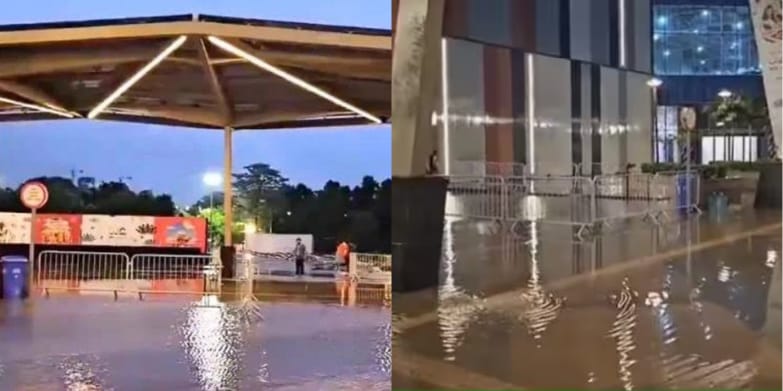The G20 Summit under the leadership of New Delhi yielded positive outcomes for India, as it successfully recommended the incorporation of the African Union as a member, positioning with its commitment to representing the interests of the ‘Global South.’ Additionally, the summit concluded with the acceptance of the New Delhi Declaration, which achieved consensus on pointing out the Ukraine conflict without directly assigning blame to Russia.
On Sunday morning, against the relentless rainfall background, leaders from the world gathered at Rajghat to give their respects to Mahatma Gandhi, an iconic figure in India’s history. The solemn tribute continued despite the challenging weather conditions.
As reported by the India Meteorological Department (IMD), the minimum temperature in Delhi settled at 23.5 degrees Celsius, which was two points below the seasonal average. The IMD data indicated that by 8:30 am, Delhi had received a total of 39 mm of rainfall, contributing to this cooler and more pleasant climate. Meanwhile, the flood scenes at the venue triggered the reactions. The Opposition party took this opportunity to criticize the Central government, holding it answerable for this situation, and highlighting the need for better planning and infrastructure preparedness of the event.
During the first day of the global summit, New Delhi experienced a fresh course of rainfall, which continued into the following day. This extended rain led to waterlogging issues in various areas across the national capital. This incident was particularly challenging, given the high level security measures and traffic restrictions that were already in place due to the G20 summit. The unexpected rainfall resulted in logistical challenges for the authorities responsible for managing the event, as they had to compete with both the adverse weather conditions along with the pre-existing security and traffic constraints. This situation spotlighted the need for efficient coordination and contingency planning to ensure the smooth functioning of the summit despite these weather-related obstacles.
Netizens shared a variety of responses on social media, some of which were more humorous and light-hearted approaches to the situation. Memes, and funny interpretations of the events circulated online, showcasing the public’s ability to find moments of cheerfulness even in challenging circumstances. This dual response, integrating concerns about infrastructure and governance with humor, showcased the complex dynamics of public reactions to the unexpected situations.
Following two consecutive days of heavy rainfall in Delhi, images of a flooded Bharat Mandapan, the designated location for India’s G20 Summit, gained extensive attention. Congress party voiced its concerns in light of the ongoing dispute over the non-invitation for the chief Mallikarjun Kharge to the event.
Youth Congress chief Srinivas BV shared the flooded venue visuals, which featured individuals actively engaged in water removal efforts. In his tweet, he took a sarcastical insult at the Central government, remarking that ‘Vikas’ (development) appeared to be swimming. This comment suggested the government’s promises of development and its well-known slogan, ‘Sabka Saath, Sabka Vikas,’ highlighting the differences between these promises and the reality of the flooded venue.

